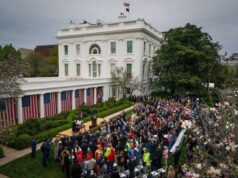By
Colonel Awadhesh Kumar, Special Forces
First aircraft to be designed and made in India was HINDUSTAN TRAINER or HT2. It first flew in 1951 and entered IAF as trainer in 1956. A total of 150 of them gave basic training to the brave pilots of IAF right up to 1989. 12 were even exported to Ghana, with even the Australians showing interest till a crash due to pilot’s bravado during a demonstration at Brisbane ended the Indian export dream.
HAL next designed and made around 160+ Pushpak HUL 26 utilized as trainers by Civil Flying Clubs and these served well from 1958 till 1985. HAL also designed in 1960 and later produced some 70 HAOP 27 Krishak aircrafts for military recce and observation purposes. These were used by Army Observation Pilots between 1965 to 1975 till they got replaced by Chetak helicopters. This aircraft was actually a development on Pushpak design.
Around 39 Basant or HA 31 aircrafts were akso produced between 1972 to 1980 for agricultural purposes.
Next came the HINDUSTAN PISTON TRAINER 32, whose delivery to IAF began in 1984 as a replacement of HT2. Total of 120 were handed over to the IAF by early 1990s. All were finally grounded and removed as trainers, after a fatal spin related crash in 2009.
HINDUSTAN FIGHTERS 24 Marut’s designing work began in 1956, the first flight was in 1961 and the fighter bomber entered IAF service in 1967. Then every thing was abandoned after just manufacturing 147 aircrafts. The only problem was the underpowered engine. Alas we never could understand the GREAT GAME.
HTT34 was to replace HPT 32. However due to various problems HTT 34 failed and so 75 of Pilatus PC7 Mk 3 had to be imported for basic training. Now finally HTT40 has cleared the spin test in Nov2018 and hopefully it should be entering IAF service as basic trainer.
HAL also designed and produced 190 of HINDUSTAN JET TRAINER 16 KIRAN MkI and 60 Mk2 as Intermediate Jet trainer from 1968 to 1989. These trainers were used for next stage or Stage 2 training of pilots after their basic training on HT2/ HPT 32. The KIRANS also excelled as IAF acrobatic team the SURYA KIRAN.
HINDUSTAN JET TRAINER HJT36 was to enter service for stage 2 training as replacement of HJT 16. However like HTT40 it has still not been cleared for production as a trainer due to its stall and spin recovery problems. Every one is eagerly waiting for it.
The LCA GSQR was made in 1985 but the first aircraft took to the skies only in 2004 and the first Squadron started forming in 2016. We are firmly moving in the right direction and in next few years may be looking at over 400 of various variants of Tejas before HAL starts manufacturing the replacements.
Meanwhile India needs to accelerate the AMCA process so that the first proto type takes to the skies as fast as possible. Aim must be to have the first Squadron forming well before 2030. By mid 2020s we also need to get cracking on design etc of our own Heavy Combat Aircraft as replacement of some of the Sukhoi MKIs squadrons in service starting 2040 onwards. We have done enough of licence production by manufacturing Harlow, Percival, Vampire, Gnat, Ajeet, MIG21 and its versions including Bisons, Mig27 Jaguar, Sukhoi MkI, Hawk Trainer, Dornier and Avro. Rotary wings will be discussed in another article.
From the fighters we move on to take a look at the indigenous effort in the transport segment. The first prototype of National Aeronautics Laboratory designed 14 seat transport aircraft flew in 2004. Then the second prototype crashed on 6 March 2009. Nine years after the prototype Saras aircraft tragically crashed, killing all three crew members, India is once again looking to join the small elite of nations building transport / passenger aircraft. Earlier this week, 21 member committee of experts were set up to look into civilian aircraft manufacturing, which is endeavouring to put in place a road map of India’s journey towards successful launch of commercial airliners.
The IAF has already placed orders for 15 SARAS aircraft. In fact with growing commitments of all kinds each Air command must have their own Communication flight to look after the entire theater’s needs. So 30 aircrafts will be required for this purpose only and may be 03 additional for Andaman Command. The IAF, IN, Coast Guard, HAL, ADA and NAL must press on to quickly develop MK2 and Mk3 version of SARAS to join duty to meet expanding requirement of Electronic Intelligence Surveillance, Coastal surveillance and as subsequent replacement of Dornier 228 presently in service. As on date IAF operates 54 Dornier, IN operates 38 and Coast Guard has 34 of them. These are used for various duties including as intermediate trainers for Transport pilots. So the MoD will itself require at a conservative estimate nearly up to 200 aircrafts. Then there is likely to be demand from civil feeder airline services to tier 2 and tier 3 cities in near future. Even export market may brighten up with orders from SAARC countries and others.
India also requires in foreseeable future up to 48 AWACS, 48 Long Range Maritime Recce / Surveillance, 48 Aerial Refuellers and say another 48 transport aircrafts with 50 ton carrying capacity. Thus looking at a total of nearly 200 aircrafts, it will be more prudent that we commence planning to design and manufacture them in such a way that at least 70 % of the number enter service through indigenous efforts.
In the similar manner as above, the Navy will be needing 48 aircrafts for Medium Range Maritime Recce and another 72 by IAF to meet the operational / logistic needs of Army and the Air Force. These air crafts need to be with carrying capacity of 20 tons / 60 paratroopers. Basic work on concept, GSQR should also start soon.
The immediate need is replacement of AN32s and the still serving Avros with an aircraft with carrying capacity of 12 tons. We may be requiring over 150 in this category. So in this segment we need to start MAKE IN INDIA with maximum collaboration and not just Screw Driving or Licence production.
Finally with capability build up, we should not neglect our Civil air transportation requirements. There is a huge potential there and why should we just give this away to the foreign manufacturers. The specifics of the plans can be worked out, but a couple of things are evidently clear. Unlike the Saras which is a small 14 seater, this time we need to look at much bigger thing. Aim must be manufacturing aircraft of 100 seats or more, which would cater to the Indian aviation market in a more appealing fashion.
According to the Directorate General of Civil Aviation, India has around 1,350 aircraft registered in the country. Of those, 620 belong to scheduled operators, and only 79 of these are less than 100 seaters. This shows a strong preference for larger, home-grown aircraft.
The former Chairman of Indian Space Research Organisation, Kiran Kumar, recently said that the country was ‘poised for significant growth’ in the industry. He said that many industries in the country already provide key components to other aircraft manufacturers, and that it was about time they started building on these capabilities.
“In the coming days and years, there is a tremendous opportunity, we need to build on the capabilities of the country” He commented. He claimed other companies are realising the potential in India to manufacture cost effective components and sub-systems, and that Indian aircraft manufacturing should be supported by the government.
We also need to make sure that we don’t depend only on outside entities for building the aircraft; we need to start building in the country. NOW




